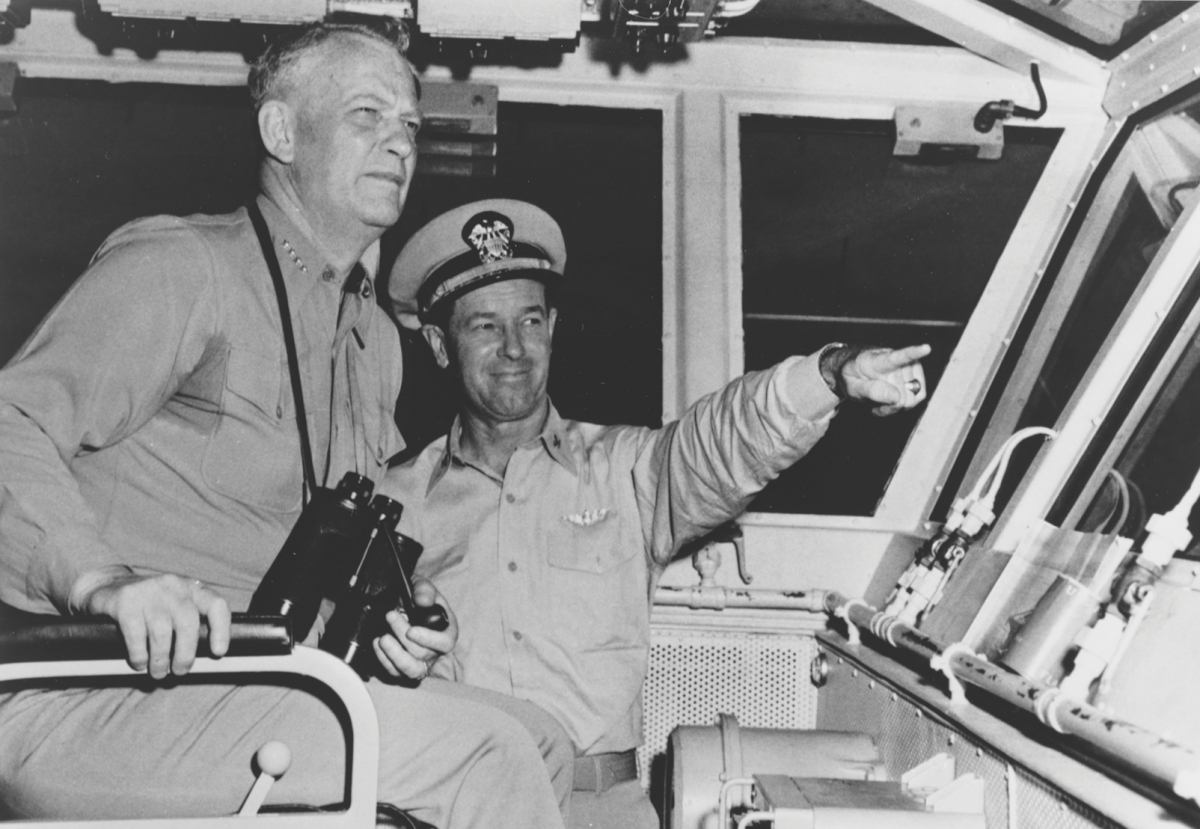
A career naval aviator, Admiral Roy L. Johnson graduated from the U.S. Naval Academy in 1929 and earned his wings. Following a brief tour with a cruiser scouting squadron, he returned to Pensacola as a flight instructor. As he recalled in his Naval Institute oral history, this was in the mid-1930s, when Rear Admiral Ernest King decided that a number of Navy captains should go through flight training to become more knowledgeable and capable commanding officers of the new carriers entering the fleet.
As instructor, probably the most trouble I had with the students was with the captains. I had Captain Ernest Gunther as a student. He couldn’t even taxi the airplane. Captain John Sidney McCain came out, and I took him out to what we called shoot the circle. You’d go up, climb to 1,500 feet, cut the engine back, glide down, and land inside this 200-foot circle.
I could see what he was doing, because he would cut his power and glide once he got over this little farmhouse. He went out one afternoon, came back, and the check pilot said, “He couldn’t even land in the field let alone the circle.” I went over and asked McCain what happened. He said “The altimeter must have been out, son.” What had happened was that the wind had change 180 degrees, and he’d lost all his check points.
The future Admiral Bull Halsey went up—Evans, I guess, was his instructor. Halsey asked, “How do you take this thing off?”
Evans says, “Well, you get in there; you get all set, and you head it down the runway. You give it full throttle, push the stick forward, and I defy you to keep that thing on the ground.” Well, off he went, and the next thing people saw was the plane up on its nose. They finally graduated all these people out of Pensacola.

Johnson saw heavy combat in the Pacific in World War II, including service in 1944-45 on board the carrier USS Hornet (CV-12), first as air group commander, then air officer, then executive officer. The Hornet survived Typhoon Cobra in December 1944 and Typhoon Connie in June 1945.
In that second typhoon, we hit this mountain of water. Gad, it must have been ten times as high as this house, and when it came down on the flight deck it carried everything away. The edges of the flight deck were down, and the antennae were gone, all the catwalks, and some airplanes over the side.
The next morning, the question was could we operate airplanes, and Rear Admiral Joe “Jocko” Clark, the carrier task group commander, said yes. You could see that with the edges of the flight deck bent down you were bound to get turbulence. We launched an F4U, and the first one off hit that turbulence and just landed in the water upside down.
Clark told us to get blowtorches and cut the edges off. It was protective armored steel, and they were out there that day and all night. It was obvious they were never going to cut that stuff off.
The guy never gave up. He said, “All right, try to find us a way of launching airplanes.” So, for the first time in the war, and I think the only time in the war with an Essex-class carrier, we launched airplanes with the ship going full speed astern and the airplanes going off the stern. Of course, we recovered them in the normal way.
Well, you can’t do that for very long. The engineer was about to go nuts using his power plant like that. We operated that way for two days, and finally went into Leyte. The USS Bennington (CV-20) was there in the same shape we were. They decided to repair the Bennington in Leyte and send us back to the States.
Later, as Commander-in-Chief, U.S. Seventh Fleet, in August 1964, Johnson gave the orders to the USS Maddox (DD-731) and USS Turner Joy (DD-961) to return fire against the North Vietnamese off Vietnam in what became known as the Gulf of Tonkin Incident.
ν Mr. Clift is the U.S. Naval Institute’s vice president for planning and operations and president emeritus of the National Intelligence University.


